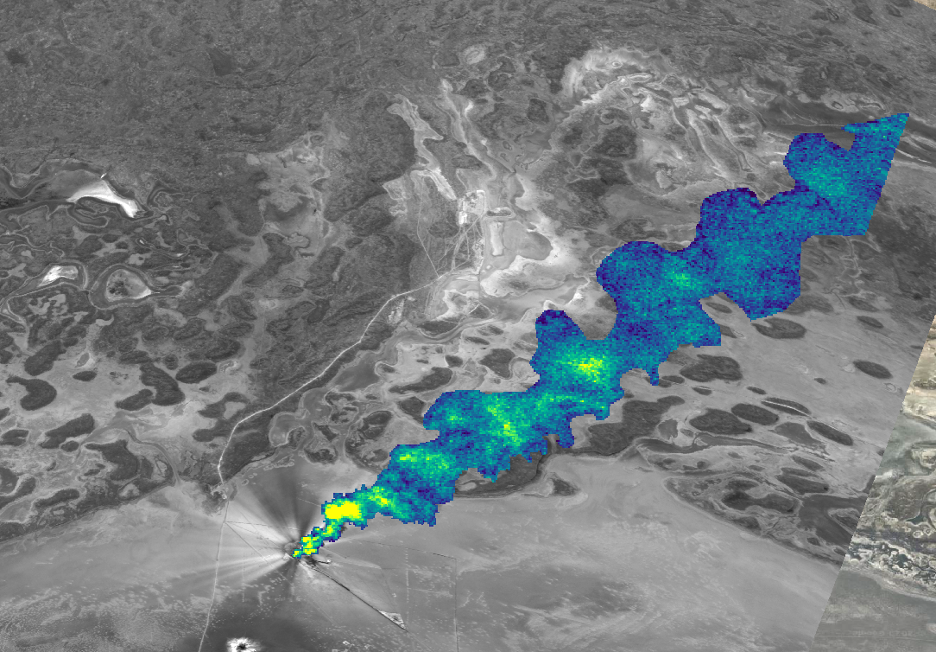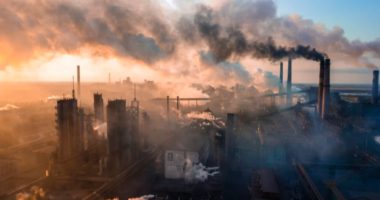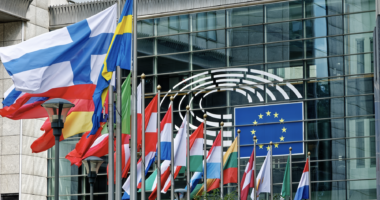Climate, Health and Equity Brief
Methane madness and progress in the U.S.
March 25, 2024

The Climate, Health & Equity Brief is GMMB’s take on the latest news on the current impacts of climate change. If you haven’t subscribed yet, you can do so by clicking here.
Hot Topic: Wasted energy. Multiple reports this week show how global methane reductions are failing to meet expectations and further jeopardizing the Paris Agreement goal of reaching net-zero emissions by 2050.
First, the International Energy Agency’s (IEA) annual Global Methane Tracker found that despite global momentum to curb methane emissions, commitments to date have failed to translate into significant cuts. The IEA says methane emissions from the energy sector were at a near-record high in 2023, and the fossil fuel industry must cut those emissions by 75% in the next six years to get on track to meet Paris goals.
A second study found that oil fields across the U.S. may be emitting three times more methane than official estimates have suggested. Researchers found that the six U.S. oil- and gas-producing regions surveyed release approximately 6.2 million tons of excess methane gas into the atmosphere annually. Those emissions represent an annual loss of roughly $1 billion in commercial value and $9.3 billion in annual social cost, according to the study. They also represent terrible news for the planet as methane has 80 times the warming power of CO2 emissions over the first 20 years.
Yet another report issued this week found that none of Europe’s five big oil- and gas-producing countries surrounding the North Sea plan to stop drilling this decade—and some are “aggressively” exploring and licensing new oil and gas fields—despite needing to cut production by 80% by 2030 to meet their promises under the Paris Agreement.
Despite the sobering reports, there is reason for hope. The EPA issued what is being hailed as “the single most important climate regulation in the country” by requiring all new passenger cars and light trucks sold to be all-electric or hybrids by 2032. The rule will have a transformative impact on the U.S. transportation sector, which currently accounts for the country’s largest single source of carbon emissions. And thanks to state and municipal participation in the EPA’s Climate Pollution Reduction Grants Program, 96% of the U.S. will soon be covered by plans to reduce climate pollution.
Human Health
75% of Afghanistan is in the thick of a years-long drought, displacing entire villages, leaving millions of children malnourished and driving families into unrelenting debt. (The New York Times)
The World Health Organization launched a toolkit to help health professionals understand the health impacts of climate change and drive climate action. (WHO)
Planetary Health
The IEA’s 2024 Global Methane Tracker shows that methane emissions held a near-record high last year despite pledged reductions, and a new study suggested that oil fields across the U.S. may be emitting three times more methane than official estimates. (Bloomberg, The New York Times)
February global sea-surface temperatures were the hottest ever recorded in a single month, setting the stage for what experts expect to be the worst coral bleaching event in history. (Inside Climate News)
Equity
The Biden administration is allocating $120M to tribal nations to fight the impacts of climate change as indigenous communities remain the most affected by severe environmental threats despite safeguarding 80% of the world’s biodiversity. (ABC News)
Bloomberg Philanthropies launched its American Sustainable Cities initiative, which will invest $200 million over three years to empower 25 U.S. cities to tackle climate change and racial wealth inequity, prioritizing action in disadvantaged communities disproportionately impacted by climate change. (Johns Hopkins University)
Politics & Economy
A new report has found that none of the five big oil and gas-producing countries surrounding the North Sea plan to stop drilling this decade—and some are “aggressively” exploring and licensing new oil and gas fields—despite needing to cut production by 80% by 2030 to meet their promises under the Paris Agreement. (The Guardian)
A new report found that nearly half of all U.S. homes are at risk of severe or extreme damage from flooding, high winds, wildfires, heat, or poor air quality, with a quarter of all U.S. real estate facing rising insurance costs and reduced coverage options due to mounting climate risks. (CBS News)
While 30% of Americans say they are willing to engage in political actions addressing climate change, such as signing petitions or contacting officials, only a fraction report having done so within the last 12 months, emphasizing the need for strategies to bridge the gap between intention and action. (Yale)
President Biden’s $8 billion budget request to enroll 50,000 young people in the American Climate Corps has been met with vitriol and backlash from the GOP, illustrating the difficulty Democrats will face to activate a program 15 years in the making. (POLITICO)
Research shows that U.S. utility companies must adapt their aging power infrastructure to protect against the perils of a changing climate, yet few are adopting the simple, affordable solutions that would significantly reduce the chance of deteriorating power lines igniting a wildfire. (NPR)
Despite the worsening climate crisis and 2023 being the hottest on record, corporate broadcast networks reduced their climate coverage by 25% compared to 2022, and climate coverage accounted for less than 1% of total broadcast content. (Media Matters for America)
Action
Realtor.com has added three new climate risk factor scores – heat, wind and air – to real estate listings, with a 1-10 scale of current risk and expected change for each risk in 15 and 30 years. (Real Estate News)
As climate change fuels an earlier and prolonged kitten season—the warm-weather months when cats are most fertile—animal shelters across the U.S. are struggling to manage burgeoning feral cat populations, raising concerns for animal welfare and sparking debate about proposed solutions. (Grist)
Communities across the U.S. are organizing climate cafes—in-person and online groups to discuss their emotions and fears—to cope with climate-related mental health issues. (The New York Times)
Life as We Know It
Despite five states—FL, IA, KY, SD and WY—opting out of the EPA’s Climate Pollution Reduction Grants Program, the fact that 45 states and many cities have opted in means that 96% percent of the country is now covered by a plan to reduce climate pollution. (CBS News)
The EPA finalized groundbreaking new vehicle emissions rules requiring that the majority of new passenger cars and light trucks sold in the U.S. are all-electric or hybrids by 2032, a shift that will avoid more than 7 billion tons of carbon emissions over the next three decades. (The New York Times, AP)
Kicker
Have you noticed spring is coming earlier? Learn more about changing trends and how spring has changed in your area. (The Washington Post)
If we keep pulling death from the ground, we will reap death from the skies.”
– Van Jones
The GMMB Climate, Health & Equity Brief would not be possible without the contributions of the larger GMMB team—Aaron Benavides, Stefana Hendronetto, Nikki Melamed, Sharde Olabanji and Marci Welford. Feedback on the Brief is welcome and encouraged and should be sent to [email protected].





